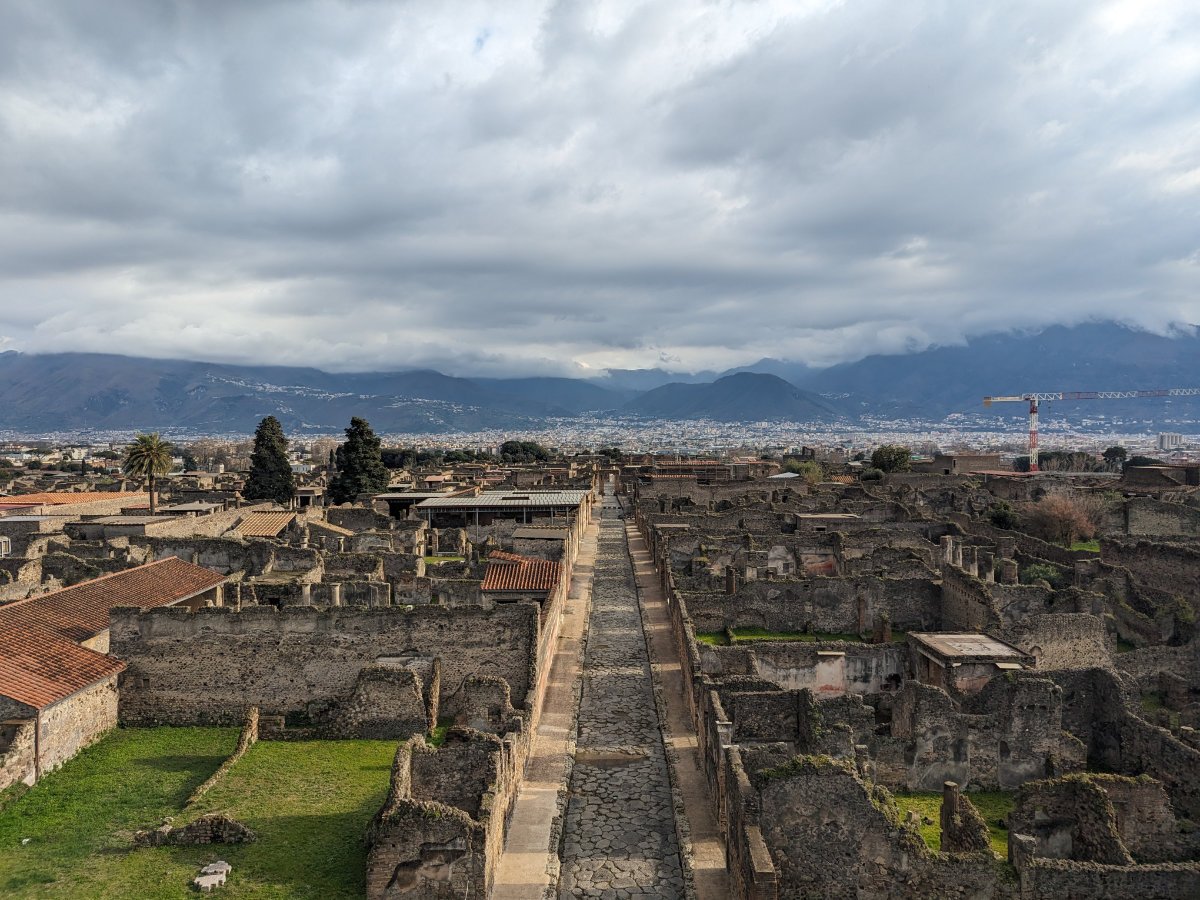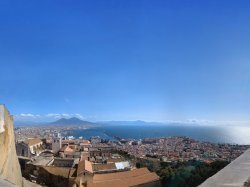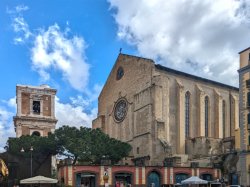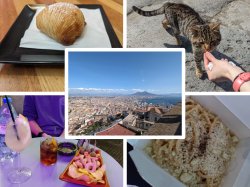Pompeii surely needs no introduction, most folks who have set foot in a history class that has even touched on Europe's fascinating and deep history have no doubt heard of the Roman Empire, and most history syllabi cannot help but mention the unfortunate fate of Pompeii - and who can blame them? Pompeii is a fascinating piece of history, an entire city consumed by the heat and ash of a volcanic eruption, meaning its nearly 2,000-year-old remains were preserved astonishingly well. It stands to reason, that if you are anywhere near the Campania region of Italy, that Pompeii is a must-see, and with our trip to Naples it was all but a certainty we would be checking it out. Having completed our trip I won't leave you in suspense: visit Pompeii. We had an amazing time, and in my albeit relatively short life it is perhaps the single greatest thing I have been able to experience. That being said, I have a deep love of all things history, but even without that love, if you have a surface-level understanding of the significance that Pompeii offers then you are sure to be able to enjoy your time there. But before you get to enjoy the wonders of Pompeii, you need to get there...
You have a few options to reach Pompeii, ranging in price, simplicity and comfort. Pompeii is roughly equidistant between the sprawl of Naples, the city Salermo and the coastal town of Sorrento - sat at the foot of the southern face of Mount Vesuvius, it is easy to navigate to and you have quite a few options. If you have cash to splash then travelling by car may well be the most convenient, private tours and taxis will take you directly to the entrance of Pompeii; private tours will include a shuttle there and a guided tour whereas taxis may well work out just about as expensive as a private tour (because they have fixed pricing), without the benefits of the private tour. Alternatively, the train is a great option that will allow you to save some money and still get to Pompeii smoothly. We travelled from Naples, but the train route we were on terminated in Sorrento so it should be more or less the same process in either direction. If you are a bit of an anxious traveller and like to have things laid out, then you are in luck, I will detail exactly what we did to get to Pompeii from Naples, as well as the alternative options I am aware of, so hopefully you can make an informed decision about how you want to travel. Even as a bone-headed Brit who has a very basic understanding of Italian, I was able to navigate public transport in Naples, and I am sure you will be able to as well...
Naples to Pompeii
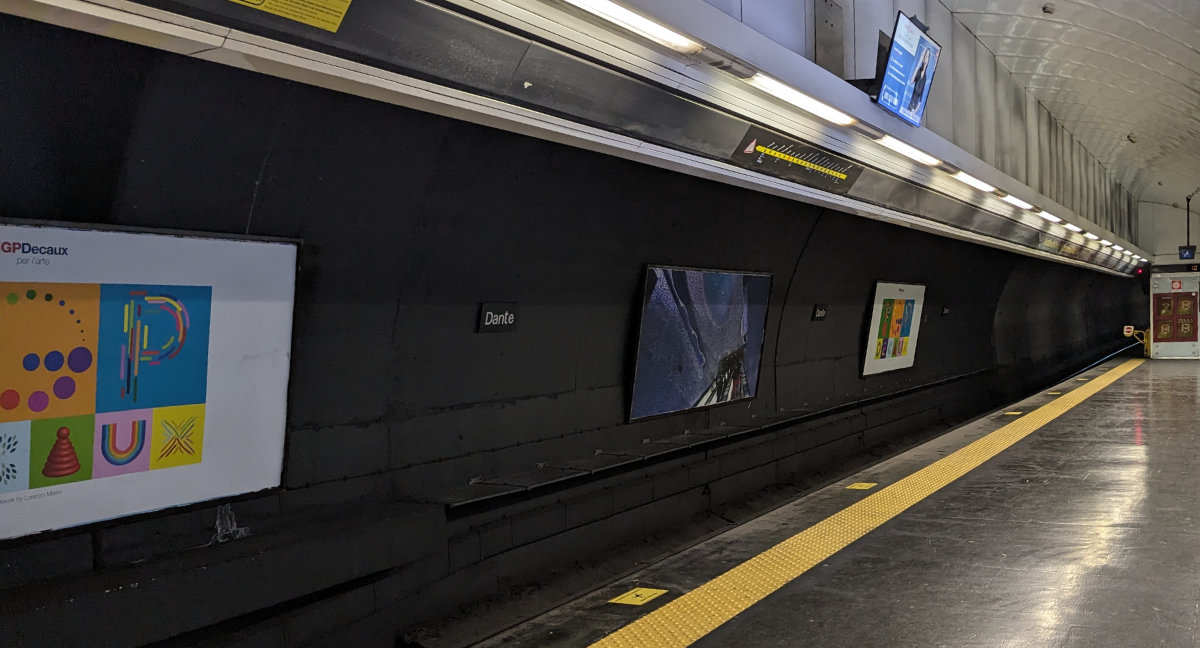
One note before we begin, Pompei refers to the modern town, whereas Pompeii refers to the historic site, if while travelling you end up at the wrong train station you will probably only be about 10 minutes away from the entrance to Pompeii, so don't fret. Without further adieu, here is how we got from our hotel to Pompeii:
- First things first, the metro system in Naples is great - easy to navigate and the automated terminals for purchasing tickets offer English as an option. We are heading to Naples Centrale/Garibaldi - although as we were expecting to hop on and off the metro later in the day we purchased a daily ticket for simplicity's sake. We were travelling on Naples Line 1, Line 2 will also take you to Garibaldi/Centrale
NOTE: Garibaldi and Centrale are essentially the same stations, stacked vertically on top of one another - you catch different trains from each, but if you are simply trying to reach them then follow signs for either - Once you arrive at Centrale/Garibaldi, start heading towards "Uscita", or exit (it is probably useful to memorise this word for general navigation, as well as "Ingresso" for entrance), you will go up a couple of sets of escalators until you pass through some automated exit barriers where you will arrive at an area with shops - this is the Shopping Gallery of Piazza Garibaldi.
- There are a few options from here on out, you can take trains to Pompeii from either train station, but the two I recommend both require you to follow the signs for Circumvesuviana
- The signs for Circumvesuviana should take you from the shopping area and back underground where you will head up to an area where on the left, are the barriers down to the platform, and on the right, are ticket booths and information desks. Between are steps up to the surface - here you have a decision to make:
- The standard line on the Circumvesuviana is the most affordable way to reach Pompeii, although this is a commuter line, it will stop at multiple stops along the way to Pompeii and may be crowded in peak times. On the plus side, it runs regularly and is a nice and reliable service
- The Campania Express, a more direct line designed for tourists that stops at Ercolano (for the Herculaneum), Pompeii Scavi (the best top for Pompeii out of the available stations nearby on the Circumvesuviana) and Sorrento. It costs a little more and runs far less regularly but is meant to guarantee you a seat and is a little more direct (this is what we opted for, mostly as times aligned with what we wanted) - remember to book a return to save a little money, we headed out around 11 and returned around 5.
- The standard line on the Circumvesuviana is the most affordable way to reach Pompeii, although this is a commuter line, it will stop at multiple stops along the way to Pompeii and may be crowded in peak times. On the plus side, it runs regularly and is a nice and reliable service
- Once you've decided which route you want to take, head over to the desks to proceed. the regular ticket offices will put you on the standard Circumvesuviana line, but if you want the express then head to the two information booths to secure your tickets - we were given a printed A4 paper ticket with a QR code. If you are taking the regular tickets, you may need to stamp the ticket before heading out, then pass through the barriers and go down to the platforms to wait for your train (as we didn't take the Circumvesuviana I cannot say for certain, but I certainly saw people stamping their tickets in the yellow machine in the Pompeii Scavi train station). If you are taking the express, you can just relax until your allotted time then return to the information desk where you will be escorted down to your train
- Once on the train, there is nothing to do other than wait for the "Pompeii Scavi" stop, where you should depart and begin your adventure!
History
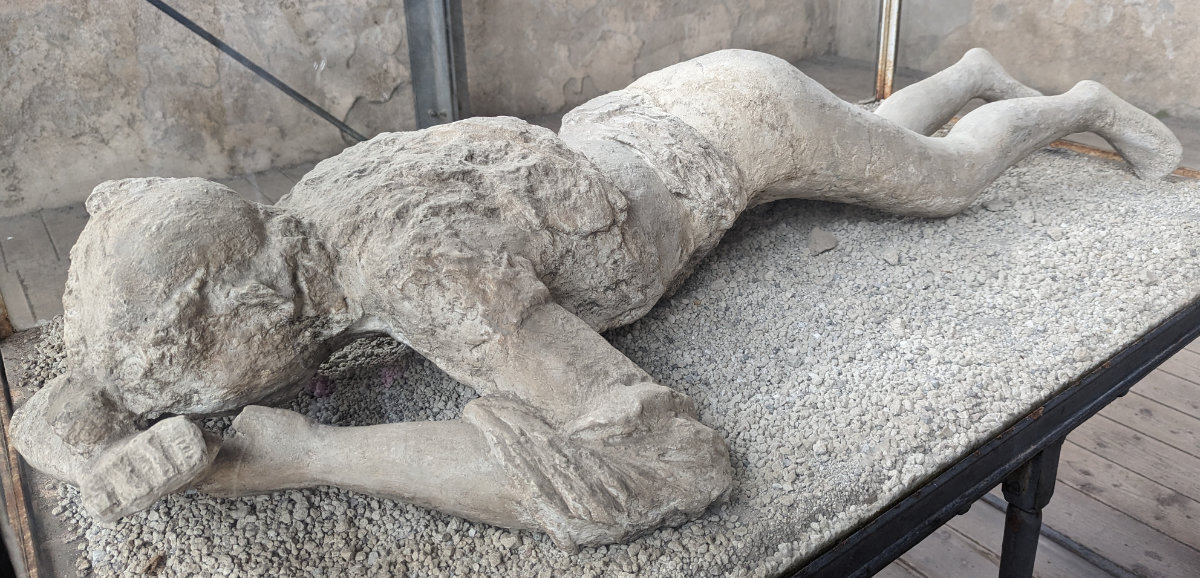
Just in case you are not familiar with Pompeii, it is probably worth a quick rundown of why it is so fascinating. Pompeii is now a ruin and a UNESCO World Heritage Site, but it was a major Roman city before its demise. The city has a long history, with influence over time coming from the initial settlement by the central Italian Oscans around the 8th Century BC of multiple small towns, the influence of Hellenic peoples from Greece and growing into a singular walled settlement by the 6th century BC within the Etruscan League of cities. Yet another period of influence came under the Samnites before the city finally fell under the influence of the Romans by 290 BC as a Socii, or federation of Rome. This long history under multiple influences gives Pompeii its architectural and cultural significance, a mixed bag of different styles and cultures from the area - the city would continue to expand out under Roman rule quite impressively, becoming a wealthy city known for the beauty of the Bay of Naples and rich agricultural land, as well as being a hub for trade.
But, what makes Pompeii most iconic would come in 79 AD - the city had dealt with minor earthquakes throughout most of its history, but by 62 AD they were becoming more and more notable, causing damage around the city and beyond. These earthquakes were foretelling of what was to come, and by 79 AD, Pompeii's 20,000 or so people would have witnessed the cataclysmic eruption of Mount Vesuvius. The eruption lasted two days, starting with pumice rain where rocks quite literally fell from the sky, but this thankfully gave many of the inhabitants time to escape. By the second day, Vesuvius would push dense ash clouds out while simultaneously heating the air at Pompeii north of 200°C. Lava flows rushed from the volcano, dramatically changing the landscape but thankfully missed Pompeii. The temperature and ash would have proved far too much for any to bear who had remained in their homes and, to date, some 1,150 bodies have been excavated at Pompeii. The significance of all this is that Pompeii's burial under some 6 meters of ash, having avoided any lava flows, meant that the city would be encased in a protective layer, in which the bodies would calcify and generally the city would be untouched and forgotten (although some excavation attempts were undertaken by Romans at the time, as well as looters, subsequent eruptions would ultimately cause Pompeii to be forgotten). Pompeii would stay that way until 1592 when the remains of the city were stumbled upon by Domenico Fontana while digging an underground aqueduct, and excavations would begin soon after which continue to this day.
Exploring Pompeii
From the Pompeii Scavi entrance, you will immediately be greeted by some Suburban Baths (Terme Suburbane), from here you ascend the hill and follow the road to Foro di Pompeii, a large square surrounded by the ruins of temples, statues and more. This is where you will really get a taste for the true scale of Pompeii, straight roads head off in all directions from here with tonnes of ruins in various states of preservation to check out. Typically, we provide a walking route for our articles, but there is so much to see and no real route that you must head in - instead, I am going to talk about the highlights from our visit which you can see on the map above, that way you can plan your own route for your visit. We spent part of our visit simply wandering from the main roads and down the backstreets, following the wagon-wheel-warn roads from house to house in awe of the depth of history you are able to see with your own eyes. Before that, a less exciting but useful bit of information, it is probably worth knowing some of the facilities: if you get hungry, there is a great little café that sells a range of food and snacks not far from Foro di Pompeii, if you need the bathroom then there are actually a few options dotted around Pompeii and all are well signposted. There is also a shuttle bus which can be a great way to get to the major sites quickly, we ended up not using this but do not underestimate the size of Pompeii, if you aren't an experienced walker, and want to see some of the furthest throws of Pompeii, then make good use of the bus.
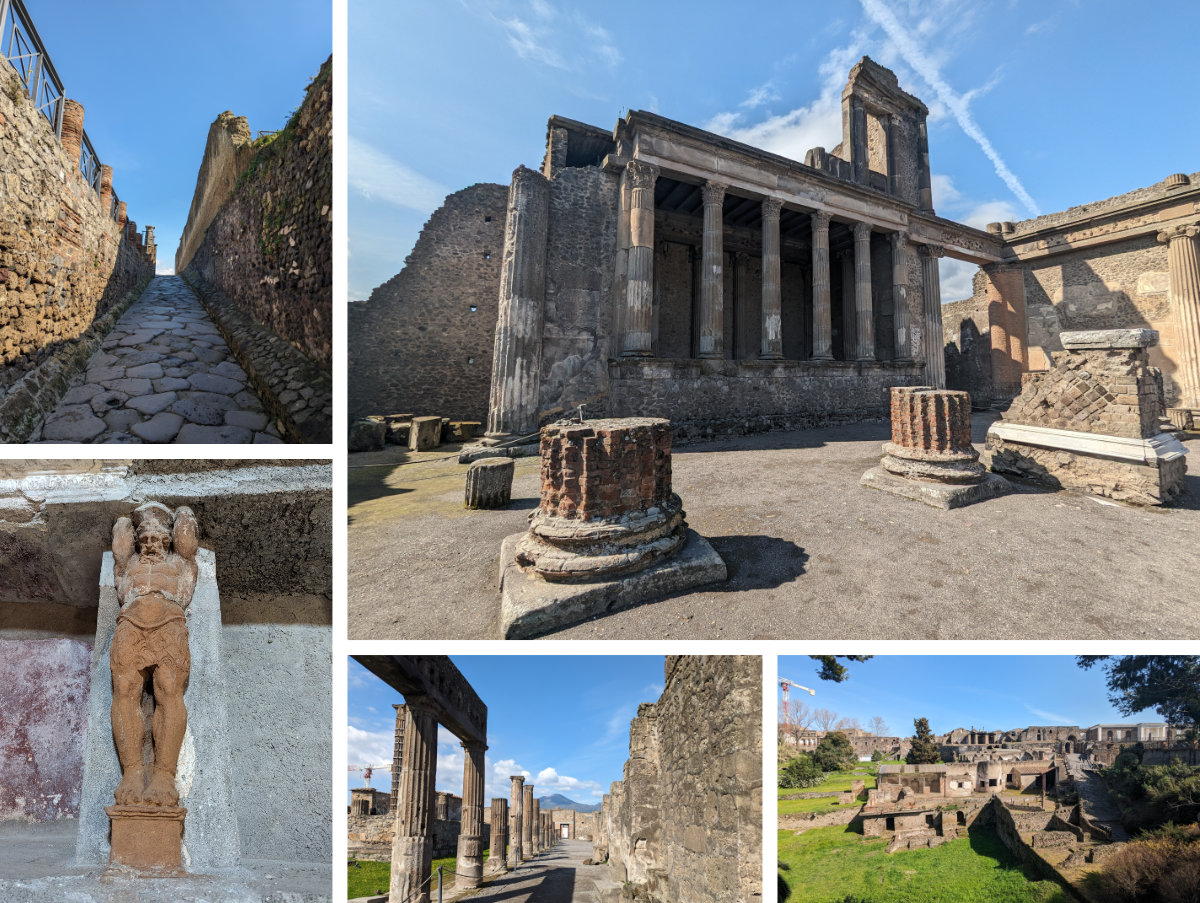
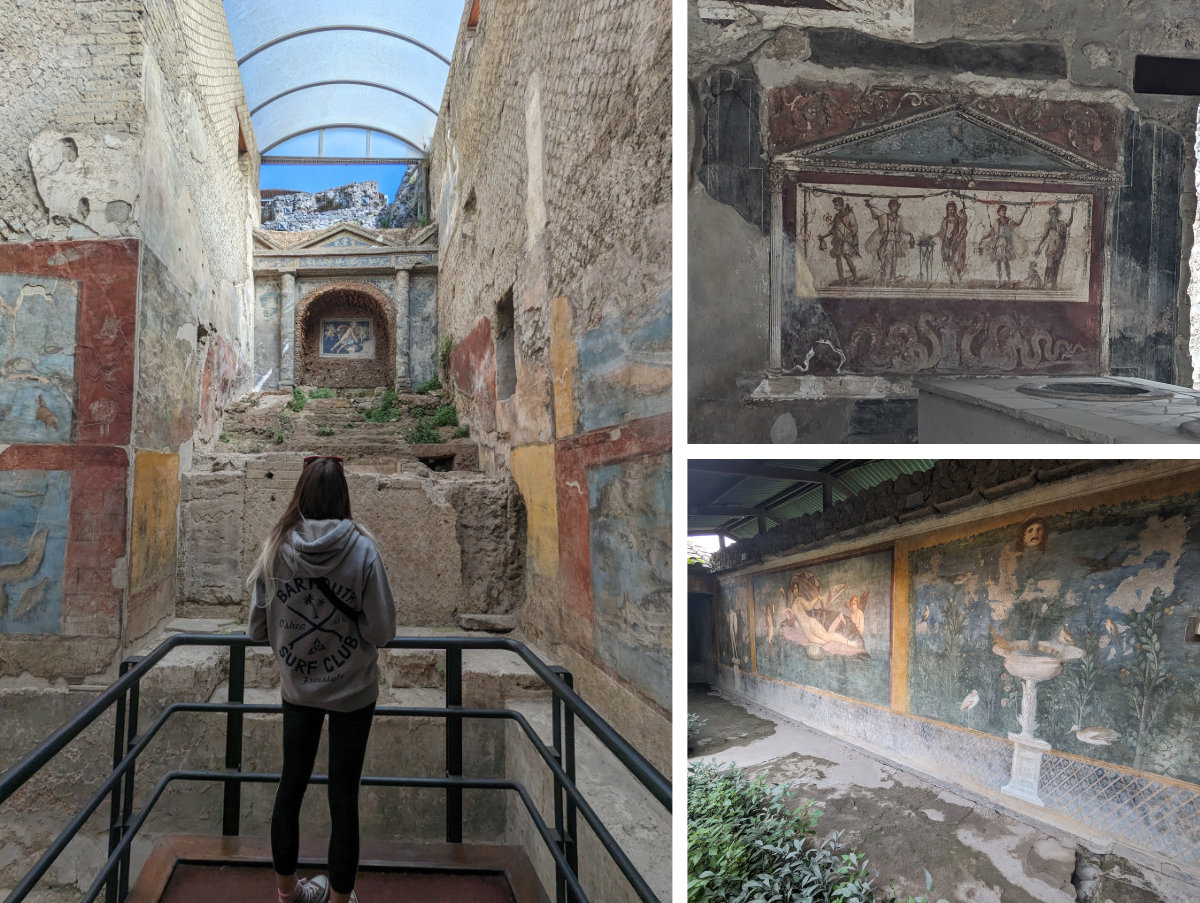
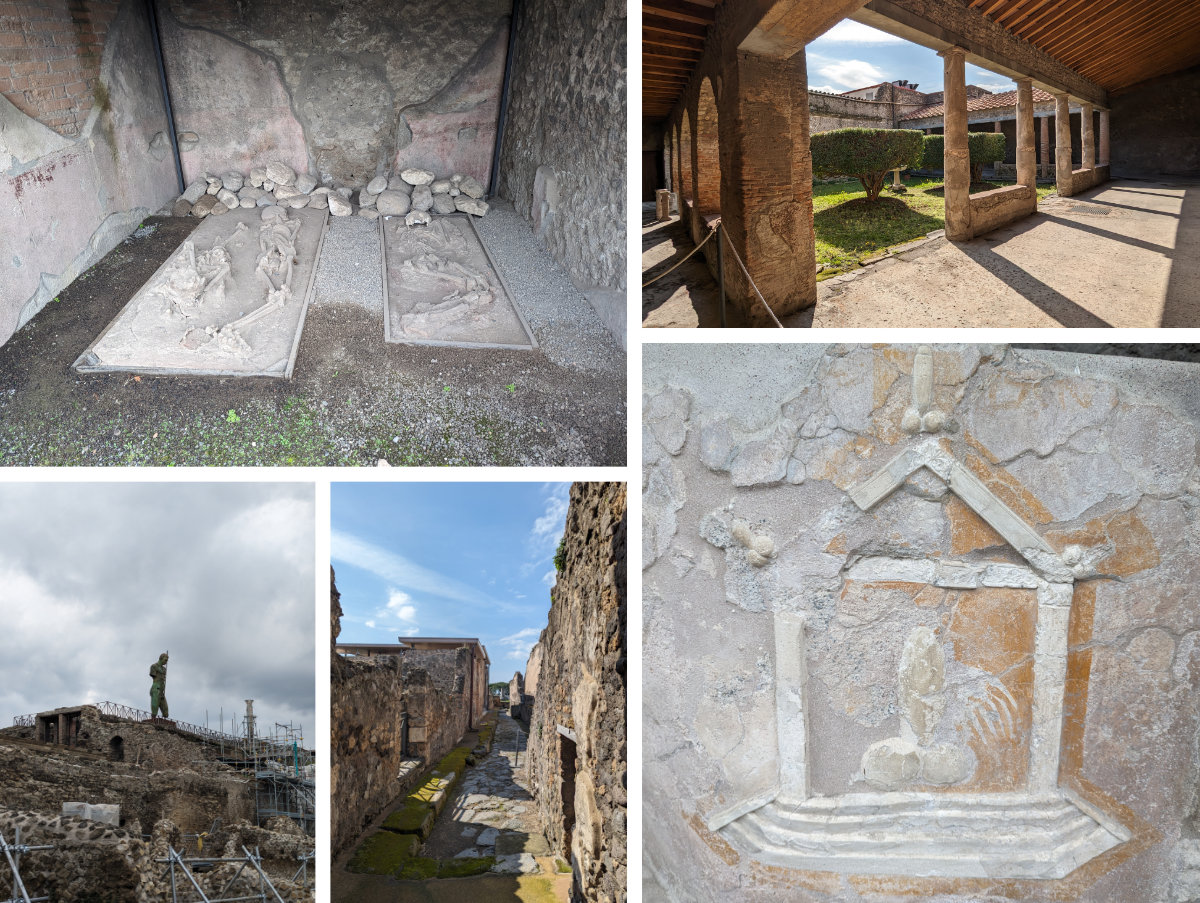
Now onto our favourite things, we got to see in Pompeii, we did a long loop around the city, weaving in and out of the streets and following the paper map provided (we unfortunately missed this map on the way in but a friendly man who happened to have two offered us one - do not miss this map, it is so useful!) - I think roaming casually is probably the best way to explore, but as you doI whole-heartedly recommend making sure you plan a stop at each of these places...
Foro di Pompeii
It is very unlikely you will miss the Foro, or the main forum, at Pompeii if you arrive at the Pompeii Scavi entrance, but all the same, do make sure you check this entire area out. The forum is flanked by some amazing temples and some of the larger buildings including Santuario di Apollo, Macellum, Santuario dei Lari Pubblici, Tempio del Genius Augusti, Portio della Concordia Augusta and the Basilica to name a few as well as the impressive Centaur statue at one end. The forum would have been the centre of daily life in the city, it was the focus point of the main public, administrative and justice buildings in the city. This is a space where visiting on a busy day is probably a good thing, helping to give a touch of reality to how busy the forum would have been in its heyday, although as the time got a little later and the city grew quieter, it was nice to have this impressive space more-or-less to ourselves.
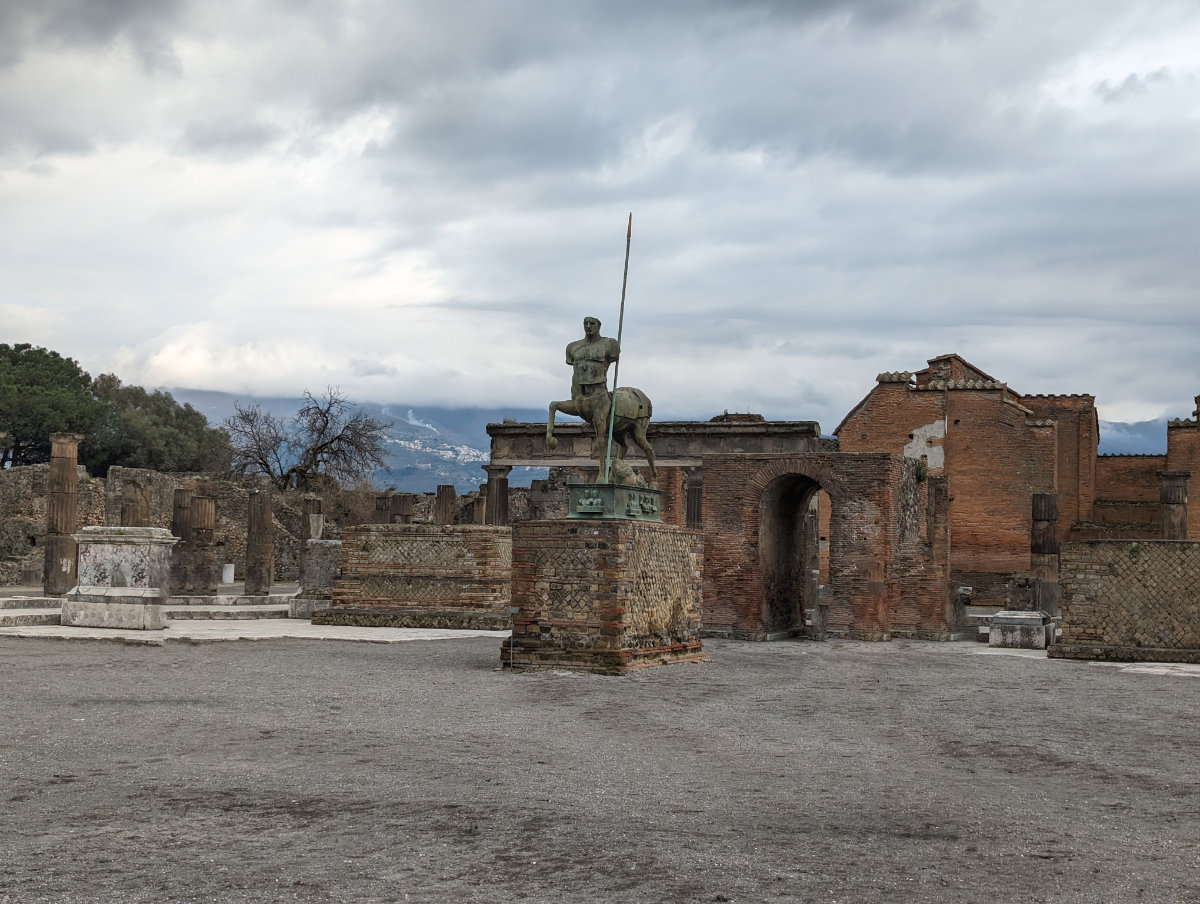
Teatro Grande
Teatro Grande, or quite simply the large theatre, is an impressive structure comprised of stepped seating built into a natural hill focusing on a stage. A Greek-style theatre, it could hold about 5,0000 spectators and has the honour of being one of the first permanent stone theatres in the Roman Empire. Ultimately, you are seeing the home of entertainment in Pompeii, a place that I am sure would have been incredibly popular with the locals. If you've already been zig-zagging through the streets and buildings for a while and need to take a load off, why not sit in a piece of history - with the sun shining and other folks around you quietly talking together you will once again be really experiencing a taste of daily life in historic Pompeii. There is also the Odeion next door, a smaller but still impressive theatre that is cordoned off for its protection.
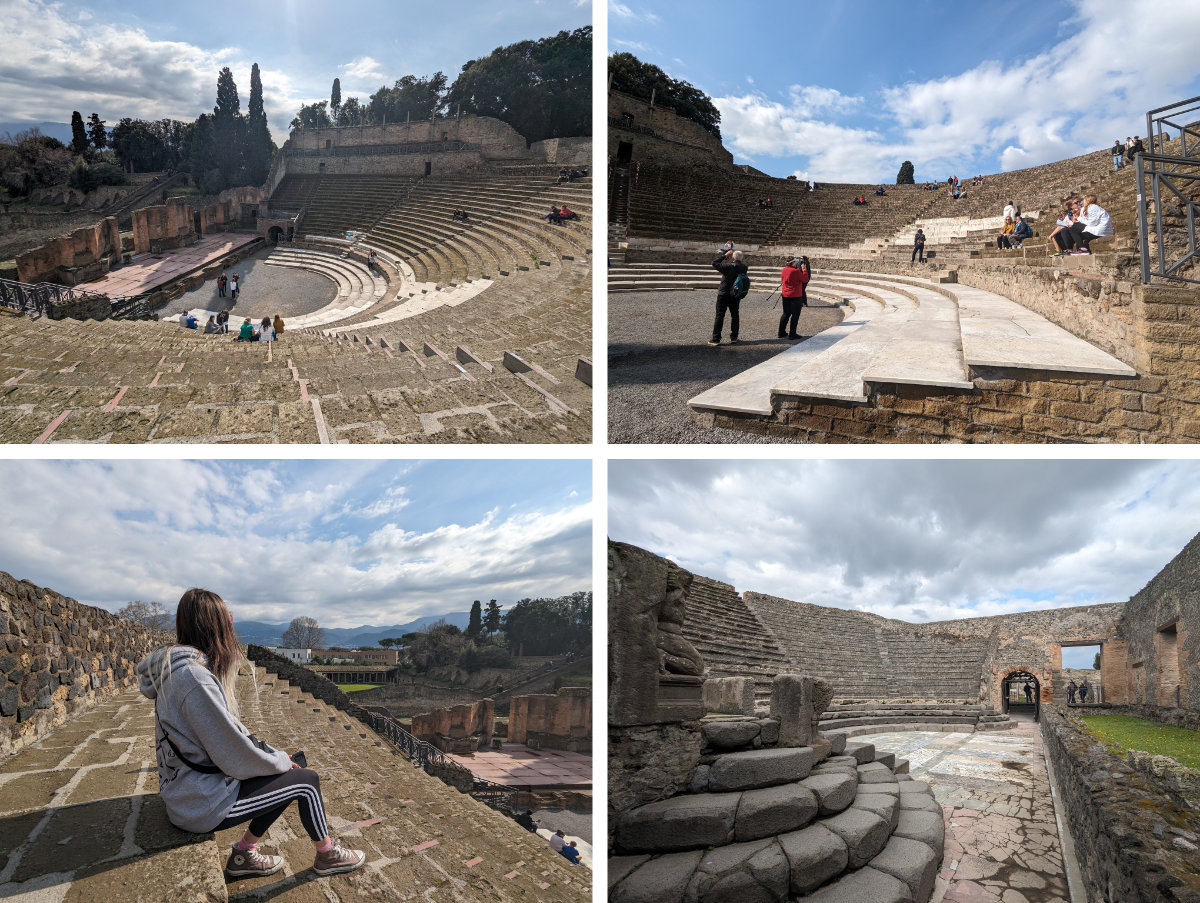
Anfiteatro
Towards the furthest eastern reaches of Pompeii is the colossal anfiteatro, which happens to be one of the oldest surviving Roman amphitheatres - or spectacula. With a capacity of 20,000 people, you can just imagine the roar of the crowds during gladiatorial contests and the preservation of Pompeii has allowed greater insights into the culture around gladiator combat, with preserved painted posters and billboards advertising the stars of the sport, proving that sports have more or less worked in the same way throughout most of human history. The amphitheatre has even seen some modern use, with acts including Pink Floyd, David Gilmour and Elton John keeping the history of entertainment in the Anfiteatro alive to this day.
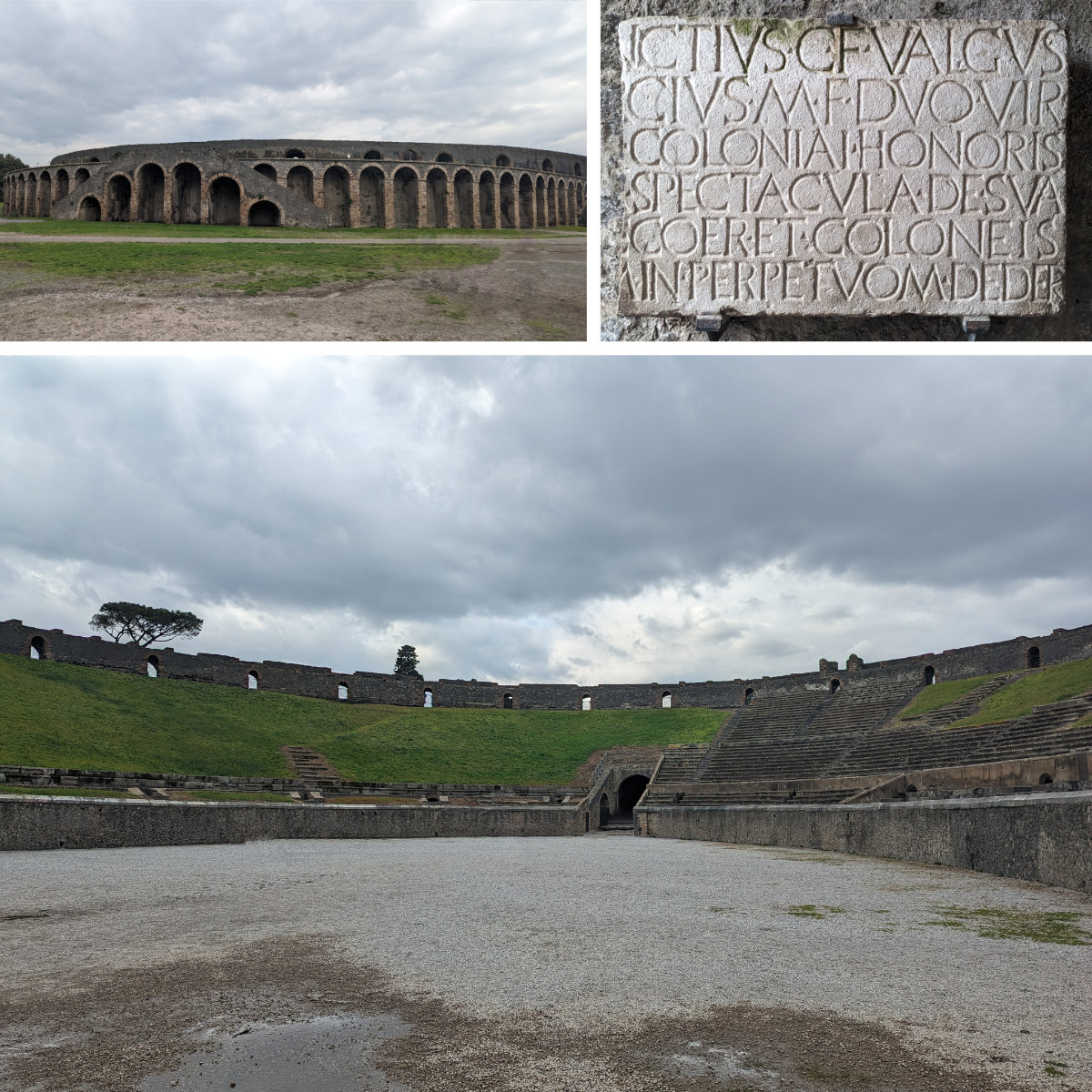
Torre di Mercurio
Torre di Mercurio, or Tower XI, offers some of the best views out over Pompeii, along the relatively wide road towards Foro di Pompeii. There isn't too much to say here, it is simply a great spot to check out all of Pompeii from - it is not a large tower in terms of capacity, so if you are visiting during busier months expect to queue, but it would be a shame to not see Pompeii from a higher elevation like this...
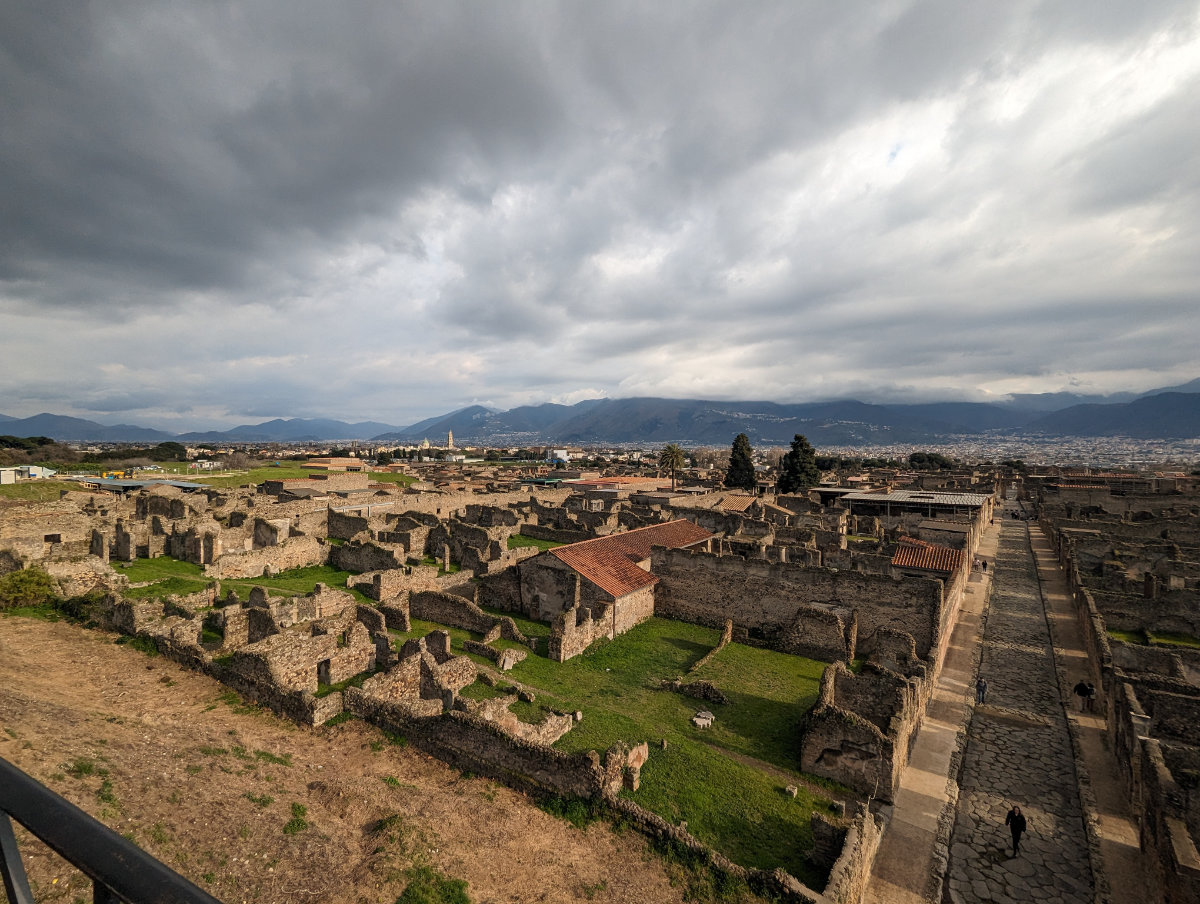
CATS!
Okay... not necessarily a feature unique to Pompeii, but the cats were adorable and friendly - especially if you're eating outside Chora Pompei Cafè, which I do recommend, our sandwiches were great! Sitting along the edges of the road, eating a fully loaded mozzarella and ham sandwich in the sunshine is a great way to recharge as your legs recover from all the steps!

Well, those are my picks, that said, it bears repeating that so much of Pompeii is worth seeing and every corner has the potential to provide new levels of amazement. We spent so much time exploring we never even went to the Antiquarium di Pompeii to see its exhibits, but the beauty of such a large space is that you can make it exactly the day you want. Be sure to wander in and out of the buildings, many of the unassuming homefronts hold wonders of beautifully painted walls and multiple rooms around peaceful central atriums, which really allow you to see the home life of ancient Romans. Make sure you stop by a few of the plaster casts too, a sad reminder of how terrifying the end days of Pompeii must have been. It really is a full day, perhaps even a couple of days if you wish to see absolutely everything, you should plan to get as much time as possible at Pompeii and not bank on being able to combine it with another stop on the way - we effortlessly did 25,000 steps around Pompeii and could have done more had we stretched our time even further. We were thrilled with our visit to Pompeii, it was worth every penny and it is unquestionably one of those stops I will be recalling forever, in disbelief that I was able to see a place as historically significant and beautiful as Pompeii...
